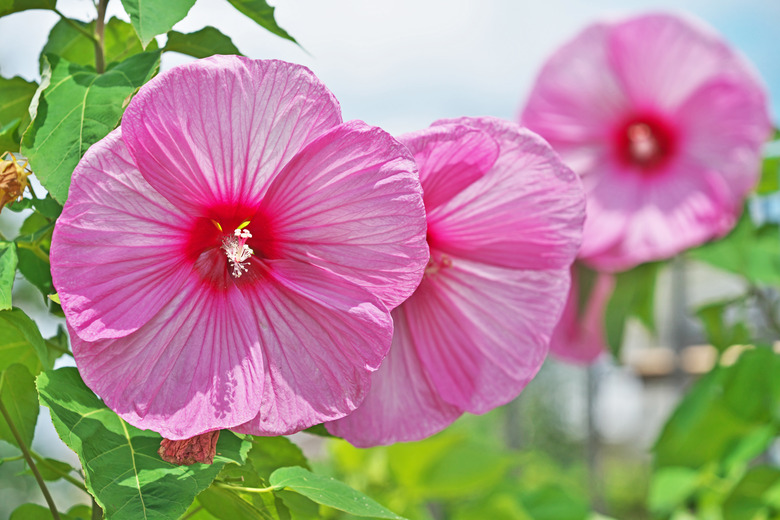What Are The Parts Of A Hibiscus Flower?
We may receive a commission on purchases made from links.
Do you live in the North but love a tropical look in the garden? Consider planting a hardy hibiscus for a wealth of huge, showy flowers. A North American native, the hibiscus features oversize blossoms the size of dinner plates with tissue-thin, ruffled petals. Each flower contains a number of male and female parts.
Tip
The hibiscus flower has five petals, a receptacle to attach the flower to the stem, and sepals to protect the bud. Each blossom also has male or female parts.
Meet the Hardy Hibiscus
Meet the Hardy Hibiscus
The hardy hibiscus (Hibiscus moscheutos) has some of the most appealing flowers in the garden. They are enormous and eye-catching, all the more so given their brilliant colors: magenta, orange, and crimson. This herbaceous perennial shrub can get taller than the gardener and thrives in U.S. Department of Agriculture plant hardiness zones 5 through 9. Despite their amazing flowers, they are very cold hardy.
Hardy hibiscus plants die back in winter to shoot back up again in spring. They don't ask much in terms of cultural care, just a sunny location and rich, moist soil, ideally on the edge of a river or pond. These are the perfect flowering plants for boggy areas in the backyard.
Inspect the Hibiscus Flower
Inspect the Hibiscus Flower
It's not hard to become obsessed with hibiscus blossoms. Their unique look is an appealing blend of fragility and toughness. Each hibiscus flower has five petals that look like they are made of tissue paper, yet the shrub survives chilly winters to reappear and bloom again in spring.
The flower stem is termed a peduncle. It is topped by a receptacle — the part of the stem with flower parts. Look for little green leaflike structures there between the stem and the flower. Those are the sepals; they protect the developing bud.
Understand Male and Female Parts
Understand Male and Female Parts
Taken together, the female parts of the hibiscus flower are called the pistil — a long, tubular organ. This includes three different parts: the stigma, style, and ovary that contains the ovules. All of these are located in the pistil in the center of the hibiscus flower. The ovary is the swollen area at the base of the pistil. The tube going up is termed the style, and its purpose is to hold up the stigma — the sticky part at the top of the pistil that catches the pollen.
Taken together, the male parts of the hibiscus flower are termed the stamen. The stamen includes the filaments that emerge horizontally from the top of the pistil and the anthers at the ends of the filaments that produce pollen. The pollen is transferred to the stigma and then travels down the style to the ovary. There, it fertilizes the ovules, which permits the flower to produce seeds.
